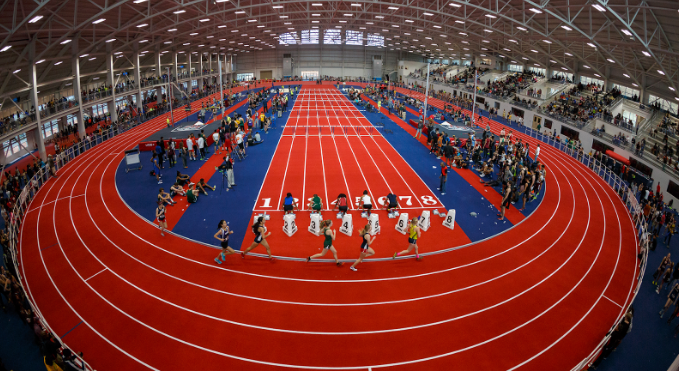The old fashioned cinder track is a unique and classic part of sports history. Many people may not know this, but before modern synthetic tracks were invented, cinder tracks were the go-to choice for running and racing events. The surface of the cinder track is made from crushed stones, and it provides a softer feel compared to other hard tracks, making it a favorite in the past.
Today, the old fashioned cinder track still holds a special place in the hearts of sports enthusiasts. Although most tracks have switched to synthetic materials, there is something nostalgic and unique about a cinder track. In this post, we’ll dive into why the old fashioned cinder track remains important and how it has shaped the world of track and field.
What Is an Old Fashioned Cinder Track? A Simple Guide for Beginners
An old fashioned cinder track is a type of running surface that was commonly used before modern synthetic tracks. It is made from crushed stones, usually cinders or small gravel, which are packed tightly to create a smooth but slightly soft surface. This type of track was popular because it was affordable and provided a good balance between speed and comfort for runners.
The surface of an old fashioned cinder track might not look as sleek as today’s rubberized tracks, but it has its own charm. It offers more grip for runners, especially when it’s dry, and the surface can absorb some impact, which is easier on the legs than harder surfaces like concrete or asphalt. Despite being less common today, many people still enjoy the nostalgia and unique feel of running on a cinder track.
History Behind the Old Fashioned Cinder Track: How It Started
Cinder tracks date back to the early 20th century and were used in many sports events around the world. They were a popular choice because they were easy to build and maintain. Early cinder tracks were often found in schools, community centers, and stadiums, providing athletes with a safe space for training and competition.
In the beginning, many tracks were made from whatever materials were available, and cinders became a common choice due to their affordability. The material is also a byproduct of coal-burning, which made it a practical option in industrial areas. Over time, cinder tracks became a standard for many sports events, especially in the United States.
The Benefits of Running on an Old Fashioned Cinder Track
Running on a cinder track has some unique benefits that make it stand out from modern tracks. One of the biggest advantages is its softness, which makes it gentler on joints compared to harder surfaces like asphalt. This can help prevent injuries, especially for runners who train frequently.
Another benefit is the natural grip it offers, which helps runners maintain traction during their races. The slightly rough surface of a cinder track can reduce the chance of slipping, especially in dry weather. Many athletes enjoy the nostalgic feel and the challenge that comes with running on a traditional surface.
How the Old Fashioned Cinder Track Compares to Modern Tracks
When compared to modern synthetic tracks, cinder tracks are a bit slower but still have their own advantages. Synthetic tracks, made of rubber or polyurethane, are smoother and faster, offering an even surface for sprinters. However, these tracks can be harder on the body, especially for long-distance runners who need softer surfaces.
On the other hand, old fashioned cinder tracks offer a more uneven but forgiving surface. They may not be as fast as modern tracks, but the slightly softer ground can make them easier on runners’ legs. This is why some athletes still prefer running on cinder tracks for training, even though synthetic tracks dominate professional events.
Why Some Athletes Still Prefer the Old Fashioned Cinder Track
Despite the popularity of synthetic tracks today, there are athletes who still prefer running on the old fashioned cinder track. For some, it’s about tradition and the memories tied to it. For others, it’s about how the track feels underfoot. The soft and sometimes uneven surface can be more forgiving and less taxing on the body, especially for long-distance runners.
Additionally, some people find that cinder tracks help with their training because they are more challenging. The surface’s natural roughness can help build strength in the legs, especially for those who train in all kinds of weather. For these athletes, the old fashioned cinder track is not just a relic of the past but a valuable tool for training.
Conclusion
In conclusion, the old fashioned cinder track has a lot of history and charm that still makes it special today. While modern tracks are faster and smoother, cinder tracks offer unique benefits like being gentler on the legs and providing a nostalgic experience. Many athletes enjoy running on cinder tracks because of how they feel and the challenge they provide. Even though they are becoming less common, cinder tracks will always have a place in sports history.
Whether you’re a runner, coach, or sports fan, understanding the value of an old fashioned cinder track helps us appreciate where modern tracks came from. These tracks remind us of simpler times when sports were about the love of the game. So, next time you come across one, take a moment to appreciate the tradition and the unique qualities that make the old fashioned cinder track stand out.
Read More: Zimbabwe National Cricket Team vs India National Cricket Team Players


